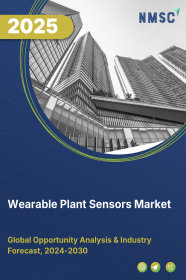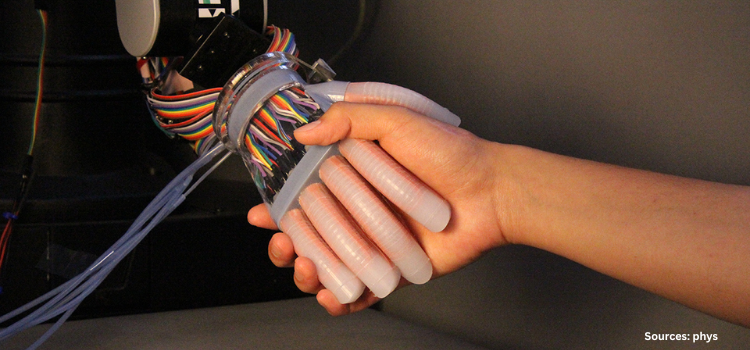Australia Eye Tracking Market by Type (Head Mounted Eye Tracker and Remote Eye Tracker), by Component (Hardware and Software), by Application (Assistive Communication, Academic Research, Consumer Behavior Research, Usability Testing and Other Applications), and by End-User Industry (Retail, Automotive, Healthcare, Government and Others)- Opportunity Analysis and Industry Forecast, 2024– 2030
Industry: Semiconductor & Electronics | Publish Date: 18-Jul-2024 | No of Pages: 143 | No. of Tables: 108 | No. of Figures: 53 | Format: PDF | Report Code : N/A
US Tariff Impact on Australia Eye Tracking Market
Trump Tariffs Are Reshaping Global Business
Australia Eye Tracking Market Overview
The Australia Eye Tracking Market size was valued at USD 28.1 million in 2023, and is predicted to reach USD 93.2 million by 2030, at a CAGR of 17.5% from 2024 to 2030. The market is a comprehensive ecosystem of products, services, and technologies designed to measure and analyze eye movements, gaze direction, and fixation points. The eye tracking market includes specialized hardware such as cameras, sensors, and light sources, as well as software solutions for data processing and analysis.
Eye tracking, also known as eye monitoring systems are applied across various industries such as psychology, market research, user experience testing, and human-computer interaction to provide insights into consumer behavior, visual perception, and interface usability. In the contemporary landscape of user experience and human-computer interaction, eye monitoring systems emerges as an indispensable tool, offering invaluable insights into user engagement and interface usability.
Rising Demand for Eye-Tracking Technology in Australian Aged Care Facilities Drives the Market Growth
The increasing prevalence of dementia among Australians residing in aged care facilities, combined with projections of a global doubling in the elderly population over the next 30 years, is fueling the Australia eye-tracking market demand.
Numerous government institutes are utilizing vision monitoring technology to amplify the voices and meet the needs of older individuals, aligning with the Royal Commission into Aged Care Quality and Safety's efforts to reassess and enhance the standard of aged care services across the country. This dedicated focus on elderly care and well-being is driving the adoption of eye-tracking solutions, thereby driving the Australia eye tracking market growth.
Increasing Adoption of Eye Tracking Technologies in Australia's Military and Defense Sectors Boost the Market Growth
The burgeoning demand for eye tracking technology within Australia's military and defense industries is significantly accelerating the eye tracking market growth in the country, driven by the need for advanced surveillance and monitoring capabilities that enhance situational awareness and operational efficiency. Military and defense organizations in Australia are increasingly integrating eye tracking technologies to analyze soldiers' visual behaviors, monitor fatigue levels, and improve training effectiveness.
This adoption reflects a strategic move towards leveraging cutting-edge technologies to bolster national security and operational readiness. The deployment of these technologies underscores their pivotal role in providing real-time insights and enhancing decision-making processes in complex operational environments and consequently expanding the Australia eye tracking market trends.
Proliferation of Alternative Technologies Hinders the Australia Eye Tracking Market Expansion
The Australia eye tracking market expansion is significantly restrained by the proliferation of alternative technologies such as gesture recognition, unimodal methods, and multimodal activity recognition. The availability and adoption of these alternatives limit the eye tracking industry growth potential by providing competitive solutions that meet diverse user needs and preferences.
Integration of AR and VR in Eye Tracking Technology Creates Future Market Prospects
The swift integration of eye monitoring systems across various sectors, including augmented reality (AR), virtual reality (VR), lie-detection systems, and cognitive testing, is poised to unlock significant opportunities within the Australia eye tracking market trends.
This technology plays a crucial role in enhancing image clarity and reducing eye strain in AR and VR applications, thereby elevating user engagement and comfort levels. This benefits from natural stimuli and controlled data collection, making it a dynamic field driven by startups and investments from tech giants such as Apple, Google, Facebook, and Samsung.
For instance, in March 2022, Mojo Vision announced a new advanced prototype of its AR smart contact lens Mojo Lens. The prototype includes various new hardware features and advanced technologies such as advanced display, communications, eye movement tracking technology, and a power system embedded into the lens. It allows users to access timely information quickly and discreetly without forcing them to look down at a screen.
Competitive Landscape
The market players operating in the Australia eye tracking industry include Tobii AB, Smart Eye AB, Lattice Semiconductor Corp, Ogilvy, Seeing Machines Limited, AVSimulation, Lumen, Eyetech Digital Systems, Inc., EyeTracking, Gazepoint, Eyegaze, Eyeware Tech, SR Research Ltd., Pupil Labs, and Irisbond Crowdbonding, S.L. and others.
Australia Eye Tracking Market Key Segments
By Type
-
Head Mounted Eye Tracker
-
Remote Eye Tracker
By Component
-
Hardware
-
Software
By Application
-
Assistive Communication
-
Academic Research
-
Consumer Behavior Research
-
Usability Testing
-
Other Applications
By End-User Industry
-
Retail
-
Automotive
-
Healthcare
-
Government
-
Others
REPORT SCOPE AND SEGMENTATION:
|
Parameters |
Details |
|
Market Size in 2023 |
USD 28.1 Million |
|
Revenue Forecast in 2030 |
USD 93.2 Million |
|
Growth Rate |
CAGR of 17.5%from 2024 to 2030 |
|
Analysis Period |
2023–2030 |
|
Base Year Considered |
2023 |
|
Forecast Period |
2024–2030 |
|
Market Size Estimation |
Million (USD) |
|
Growth Factors |
|
|
Companies Profiled |
15 |
|
Market Share |
Available for 10 companies |
|
Customization Scope |
|
|
Pricing and Purchase Options |
Avail customized purchase options to meet your exact research needs. |
|
Customization Scope |
Free customization (equivalent up to 80 working hours of analysts) after purchase. Addition or alteration to country, regional, and segment scope. |
|
Pricing and Purchase Options |
Avail customized purchase options to meet your exact research needs. |
KEY PLAYERS
-
Tobii AB
-
Smart Eye AB
-
Lattice Semiconductor Corp
-
Ogilvy
-
Seeing Machines Limited
-
AVSimulation
-
Lumen
-
Eyetech Digital Systems, Inc.
-
EyeTracking
-
Gazepoint
-
Eyegaze
-
Eyeware Tech
-
SR Research Ltd.
-
Pupil Labs
-
Irisbond Crowdbonding, S.L.














 Speak to Our Analyst
Speak to Our Analyst





















